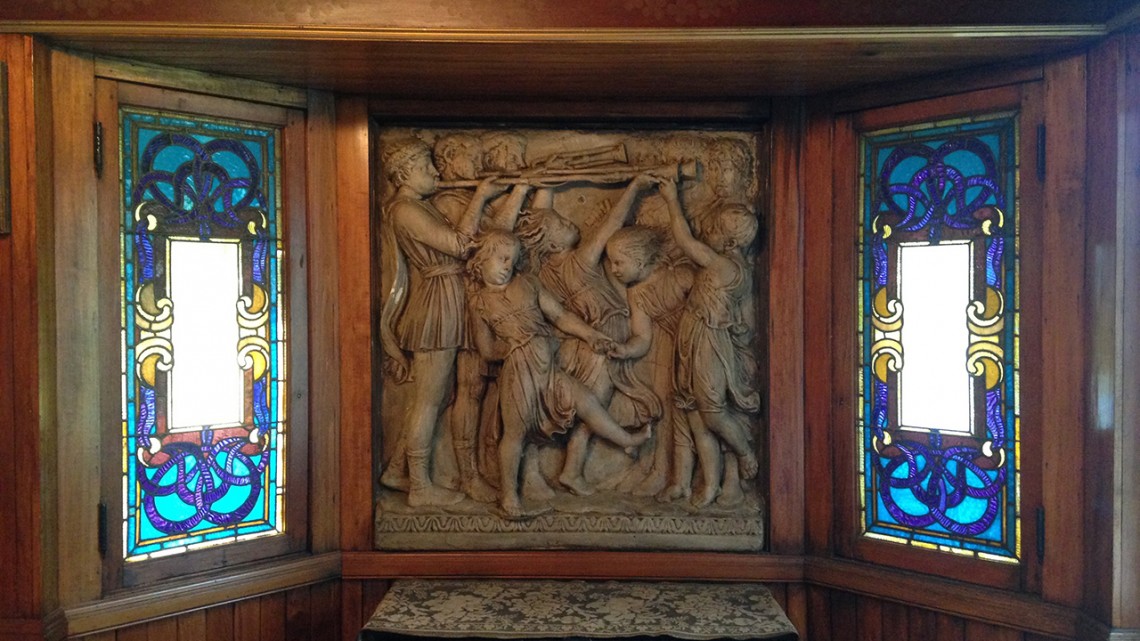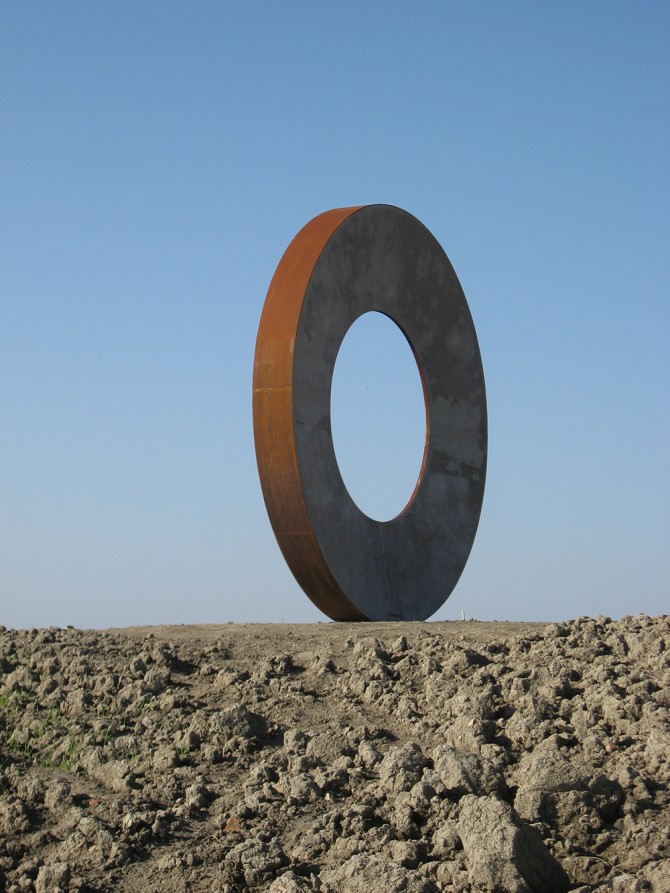
Reflecting Americans’ fascination with Renaissance art, this copy of Luca Della Robbia’s 1430s frieze “Cantoria” is installed in Ithaca architect William Henry Miller's 1876 Miller-Heller House on Eddy Street.
New book untangles Tuscany’s complex, hidden landscape
By Patti Witten
In a new book about the Tuscany region of Italy, architecture faculty member D. Medina Lasansky details how food, landscape and architecture are intertwined in the region, and uncovers a Tuscany that has been idealized, distorted and even overlooked.
“Hidden Histories: The Alternative Guide to Florence and Tuscany” also shows how Italian design and contemporary consumption patterns draw from the Romantic longings of a century before – and the extent to which “Tuscany” has been constructed by Anglos.
“The book can be read as a hypertext with a dozen different itineraries, or as a narrative from beginning to end,” Lasansky says. “Either way, it seeks to reveal aspects of the Tuscan landscape – whether it’s the contemporary prevalence of sex trafficking or wine adulteration – that are hidden in plain sight.”
Lasansky finds a revealing example of expatriates in Italy in Willard Fiske, Cornell’s first librarian, who retired to Florence in 1892 and received such notable visitors as Samuel Clemens (Mark Twain) and artist Maxfield Parrish. Calling cards left at his villa are included in Fiske’s papers in Kroch Library. While in Italy he also collected extensive material on Dante and Plutarch, which he later gave to Cornell.
The book includes an extensive filmography of the region and lists of tours and museums. It features more than 220 images, many of them previously unpublished, including 50 commissioned from a young Florentine photographer.
It is the first volume in the Critical Tuscan Studies series from Dida Press, an imprint of Firenze University Press. The peer-reviewed series features scholarly work across a range of disciplines including architecture, landscape studies, urban planning, history, sociology, politics, literature, cinema and art history.
Lasansky is the Michael A. McCarthy Professor of Architectural Theory at Cornell. An architectural historian, she focuses her research and teaching on the intersection of the built environment, politics and popular culture. Her books include “The Renaissance Perfected: Architecture, Spectacle, and Tourism in Fascist Italy” (2004), “Archi.Pop: Mediating Architecture in Popular Culture” (2014), and, as co-editor, “Architecture and Tourism: Perception, Performance and Place” (2004) and “The Renaissance: Revised Expanded Unexpurgated” (2014).
Her research for “Hidden Histories” was supported in part by a fellowship from the President’s Council of Cornell Women and funding from the Office of the Provost.
Students in the College of Architecture, Art and Planning (AAP) who assisted Lasansky in the work include Thanh Nguyen and Aquinnah Wong, both B.Arch. ’18; and History of Architecture and Urban Development doctoral students Athanasiou Geolas, Anna Mascorella, Michael Moynihan and Whitten Overby, M.A. ’13. Overby assembled the book’s bibliography.
AAP alumni also contributed advice, comments and assistance. They include Mike Babcock, M.Arch. ’17; Jen Grosso, B.Arch. ’13; Pete Levins, B.Arch. ’12/History of Architecture B.S. ’12; Ruth Lo, M.A. ’09; Chad Randl, Historic Preservation Planning M.A. ’00, Ph.D. ’14; Karl Tsui, B.Arch. ’12, and several alumni with Cornell doctoral degrees in Italian studies.
Patti Witten is a staff writer in the College of Architecture, Art and Planning.
Media Contact
Get Cornell news delivered right to your inbox.
Subscribe

